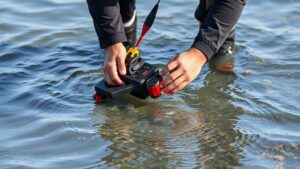Recovering Gold Artifacts in Abandoned Mission Ruins
Recovering Gold Artifacts in Abandoned Mission Ruins
The pursuit of uncovering gold artifacts in abandoned mission ruins serves not only archaeological interests but also provides insights into historical trade, culture, and the religious practices of bygone eras. This article explores methodologies, case studies, and the significance of these excavations in understanding past civilizations.
Historical Context of Mission Ruins
Mission ruins, particularly in regions like California and New Mexico, often reflect a fusion of Indigenous and colonial Spanish cultures. Established primarily during the 18th and 19th centuries, these missions were integral to the spread of Christianity and European agricultural practices. Many missions were built with indigenous labor, employing local materials, which often included gold, silver, and other precious resources.
As missions fell into decline, treasures from religious relics to gold artifacts became lost or buried beneath the rubble. For example, the Spanish Missions of California, such as Mission San Juan Capistrano, were historically known not only for their architectural beauty but also for their perceived wealth and the artifacts that adorned them.
Methodologies for Recovery
Recovering gold artifacts from mission ruins involves a multidisciplinary approach combining archaeology, history, and modern technology. Key methodologies include:
- Archaeological Excavation: Systematic digging in accordance with stratigraphic principles assists in understanding the context of the artifacts original location.
- Ground Penetrating Radar (GPR): This non-invasive technology allows researchers to visualize burial sites and structures beneath the ground without disturbing the site.
- Metal Detection: Portable metal detectors pinpoint areas of interest, often leading to the discovery of gold and other metallic artifacts.
An illustrative example of these methodologies is the work done at the Santa Clara Mission. Archaeologists utilized GPR to locate potential burial sites and then employed handheld metal detectors to recover gold pieces from the surrounding areas. This integration of technology and traditional archaeological methods yielded critical artifacts previously undocumented.
Legal and Ethical Considerations
Recovering artifacts from abandoned mission ruins is fraught with legal and ethical considerations. Many missions are located on protected lands, governed by laws such as the Archaeological Resources Protection Act (ARPA), which prohibits the unauthorized excavation of archaeological sites.
Plus, ethical stewardship emphasizes collaboration with Native American tribes and local communities to ensure that the artifacts are treated with respect and returned to their rightful custodians whenever possible. For example, the ongoing partnership between archaeologists and the local Indigenous groups in California has fostered a mutually beneficial approach to preserving cultural heritage.
Case Studies of Significant Discoveries
Several remarkable discoveries in abandoned mission ruins highlight the potential wealth of artifacts awaiting recovery:
- Mission San Gabriel Arcángel: Excavations revealed gold jewelry, altar plates, and coins dating back to the 18th century, illuminating the missions role in trade and religious practices.
- Mission La PurÃsima Concepción: The site yielded a cache of gold ornaments believed to belong to early missionaries, providing insights into both religious and local Indigenous cultures.
These case studies illustrate not just the financial value of reclaimed artifacts but also their cultural significance, offering a glimpse into the intricate tapestry of history that shaped these regions.
Challenges Faced During Artifact Recovery
While recovering gold artifacts can be rewarding, it is not without challenges. Common difficulties include:
- Site Deterioration: Ongoing erosion and environmental degradation can obscure artifacts, making retrieval increasingly complicated.
- Funding Limitations: Archaeological projects often rely on grants and donations, which can limit the extent and duration of fieldwork.
- Public Awareness: Increased public interest can sometimes jeopardize site integrity, as unauthorized diggers may flock to excavation areas.
Addressing these challenges requires a coordinated effort among archaeological organizations, local governments, and public advocacy groups to promote awareness and protect these historically significant sites.
Future Implications and Technologies
The future of recovering gold artifacts will likely be shaped by advancements in technology and in-depth historical research. Developing methods like drone surveys and 3D visualizations can enhance excavation strategies while minimizing environmental disruption. As the relationship between indigenous populations and archaeologists continues to evolve, future recoveries will likely not only focus on material wealth but also prioritize cultural heritage and education.
Conclusion
Recovering gold artifacts from abandoned mission ruins presents an exciting intersection of history, archaeology, and cultural preservation. Utilizing advanced technologies alongside respectful collaboration with indigenous communities can lead to discoveries that enrich our understanding of the past. The journey entails challenges but is ultimately a quest for knowledge that pays homage to the rich narratives hidden beneath the rubble of history.
The ongoing exploration of these sites provides both historical insight and the potential for remarkable discoveries, engaging scholars and enthusiasts alike in the unfolding story of our cultural heritage.



